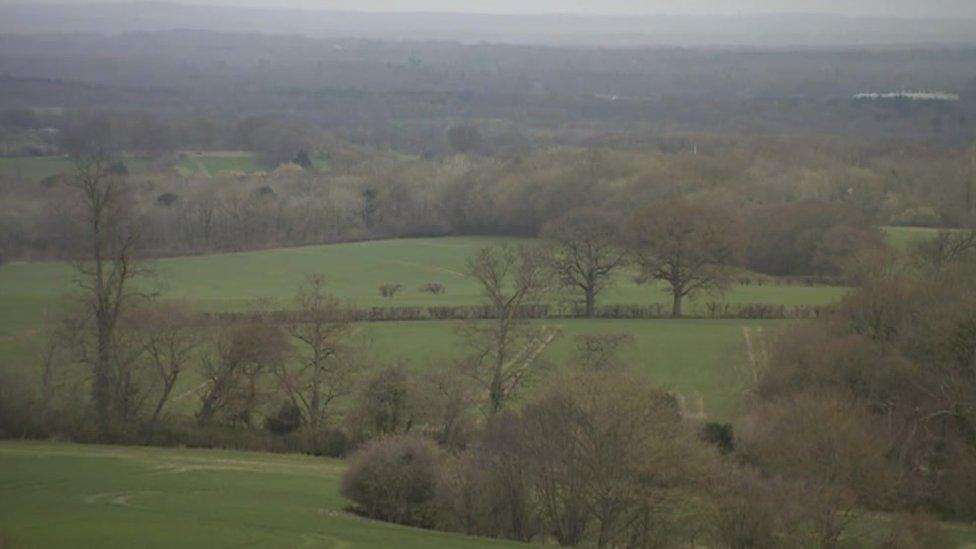Guildford green belt: Thousands of homes to be built in countryside
- Published
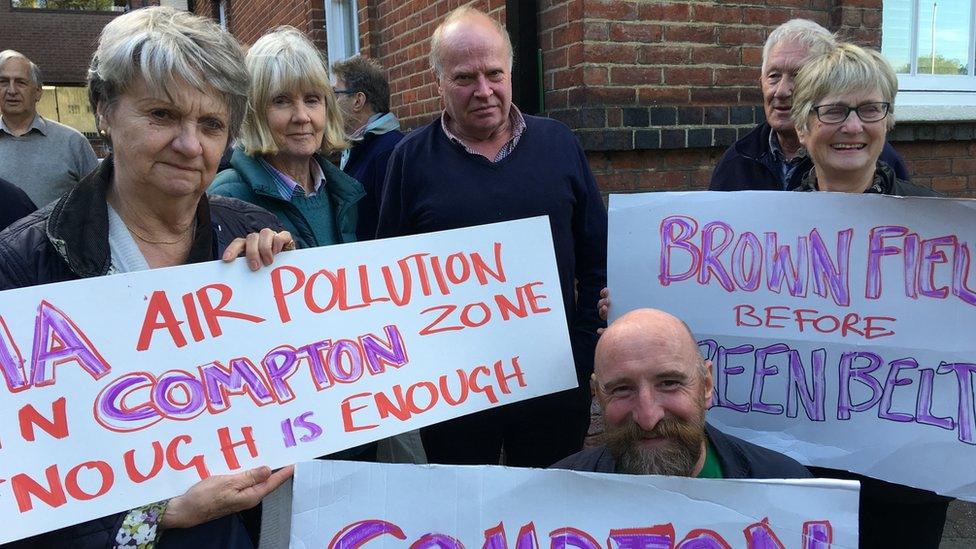
Thousands objected to the new policy
Thousands of homes could be built in the Surrey countryside after a council voted to remove 15 villages from the green belt.
The new housing policy was backed by Guildford Borough Council in the face of thousands of objections.
Opponents believe it permits unnecessary development on rural land.
The council said the plan, which allows the building of 10,678 homes by 2034, would meet rising demand that could not be met in urban areas.
Some 2,000 homes are earmarked for the former Wisley Airfield site, with a further 1,500 at Blackwell Farm off Hog's Back and 800 in the town centre.
The council said the following villages had been removed from the green belt: Chilworth, East Horsley, Effingham, Fairlands, Flexford, Jacobs Well, Normandy, Peasmarsh, Ripley, Send, Send Marsh, Burnt Common, Shalford, West Horsley and Wood Street Village.
Opponents have six weeks to lodge a High Court appeal.
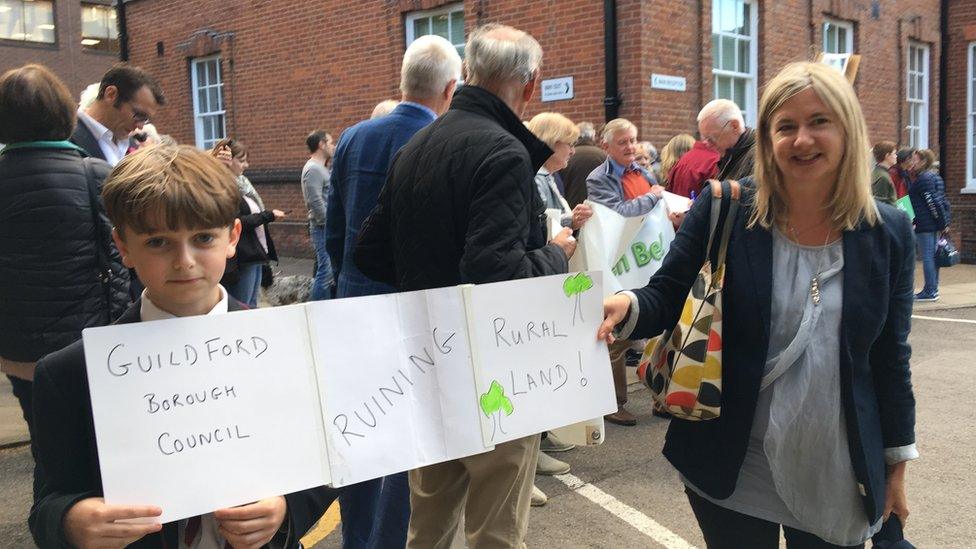
Georgie Paulson, 11, joined his mother at a protest against the plan
Katharine Paulson and her 11-year-old son Georgie were among protesters who gathered outside the council's offices ahead of the vote.
She said she was concerned about the loss of the green belt.
"We are custodians of the countryside and we need to safeguard the green belt," she said.
Georgie added: "We don't want it [development] intruding on our life."

What is the green belt?
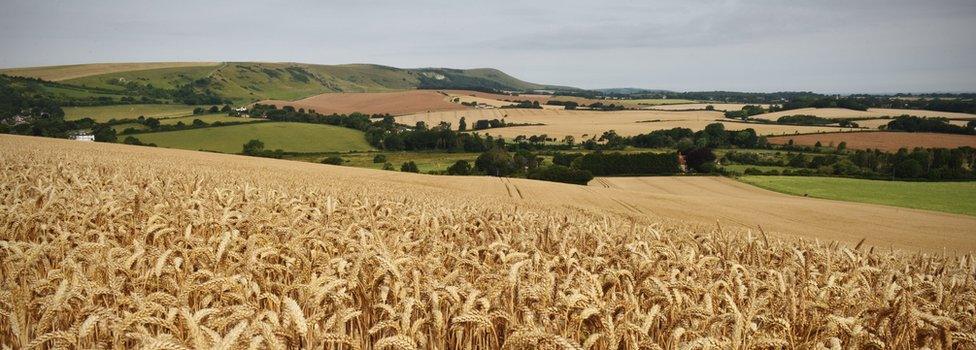
Green belts were introduced after World War Two to stop cities from sprawling and countryside being spoilt. There are tight controls on building in these areas.
The government says the "essential characteristics of green belts are their openness and their permanence". It is made up of both greenfield sites, which have never been developed, and brownfield sites, which are often on disused or derelict land that needs to be cleared.
About 13% of England is now covered and the 14 green belt areas are meant to be permanently protected - and are only reviewed in exceptional circumstances.
However, it has reduced in size by about 100km2 (39 square miles) since 2010, primarily due to councils adopting new planning policies.

The "Guildford borough local plan" has been years in the making, but opponents criticised the decision to hold the key vote just weeks before elections, which could shift the balance of power in the council.
Conservative council leader Paul Spooner agreed the timing was "unfortunate" but said that delaying until after elections would mean "we have to go through the process again" with an estimated delay of two to three years.
"On that basis it makes sense to move forward now."
In March, a government planning inspector said the plan was sound and it was justified to build on some green belt land to meet a pressing need for housing.

Follow BBC South East on Facebook, external, on Twitter, external, and on Instagram, external
- Published20 June 2014
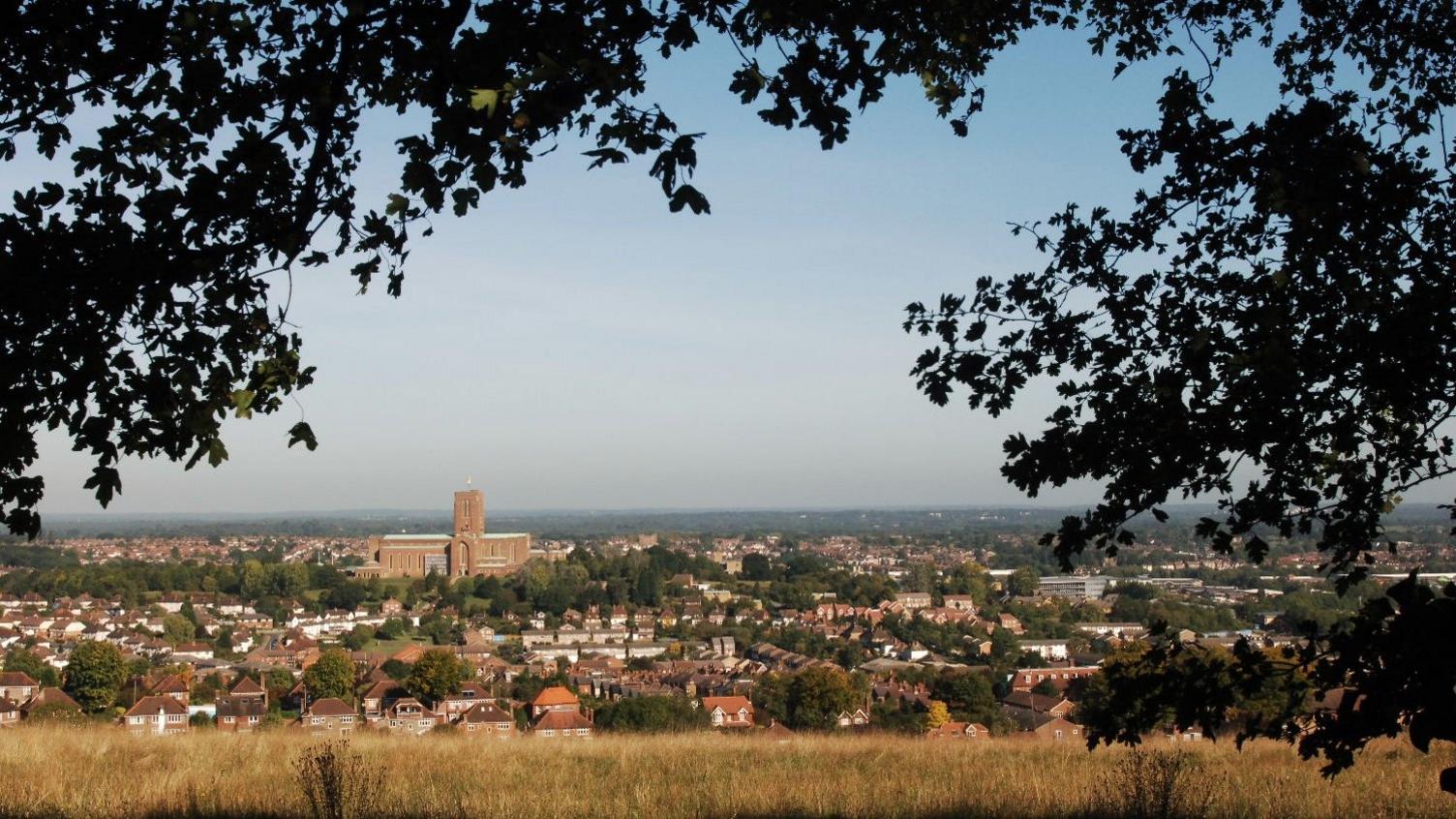
- Published10 April 2016
